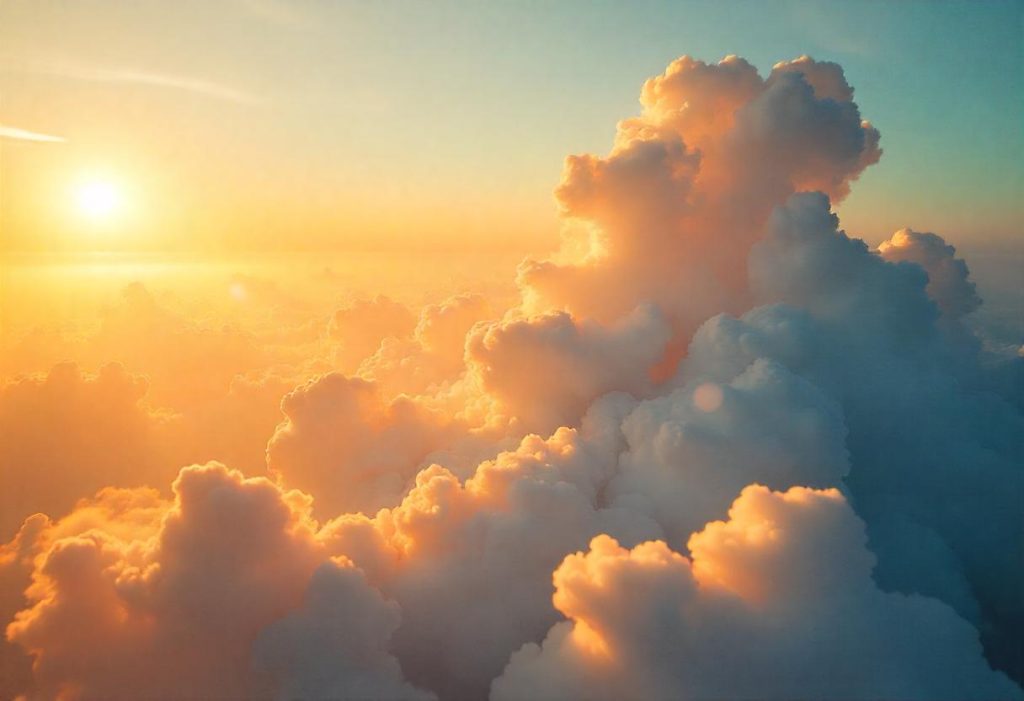Clouds are a vital element in landscape painting, adding depth, mood, and beauty to your artwork. Whether you’re a beginner or an experienced painter, mastering cloud painting can transform your canvases.

This guide will explore various methods to paint clouds using different tools, techniques, and mediums, helping you achieve realistic or stylistic effects.
Contents
- Why Learn to Paint Clouds
- Choosing Your Medium
- Essential Tools and Materials
- Preparing Your Canvas
- Techniques for Painting Clouds
- Painting Different Cloud Types
- Painting Clouds in Different Settings
- Tips for Realistic Cloud Painting
- Creative Cloud Painting Ideas
- Troubleshooting Common Mistakes
- Digital Cloud Painting Techniques
- Final Touches
- Conclusion
Why Learn to Paint Clouds
Clouds can evoke different emotions, from serenity to drama, and play a significant role in setting the tone of a scene. Understanding how to paint them allows you to:
- Enhance the depth of your artwork.
- Create atmospheric effects.
- Experiment with light, shadow, and color.
Choosing Your Medium
Acrylic Paint
- Fast-Drying
- Great for layering quickly.
- Vivid Colors
- Acrylics allow bold and vibrant cloud effects.
Oil Paint
- Slow-Drying
- Provides more time for blending.
- Rich Textures
- Perfect for creating realistic or dramatic clouds.
Watercolors
- Translucent Effects
- Ideal for soft, airy clouds.
- Blending
- Great for creating gradients in skies.
Digital Painting
- Adjustability
- Layers and opacity controls make digital tools versatile.
- Experimentation
- Try multiple styles without committing to one.
Essential Tools and Materials
Brushes
- Round Brushes
- Excellent for creating soft edges.
- Fan Brushes
- Great for blending and creating wispy clouds.
- Flat Brushes
- Ideal for structured cloud shapes.
Palette Knives
- Use to create textured or dramatic clouds, especially with oil or acrylic paints.
Sponges
- Perfect for stippling and creating fluffy, airy cloud textures.
Other Tools
- Cotton Swabs: Useful for refining details.
- Tissue Paper: Helps in lifting excess paint for soft effects.
Preparing Your Canvas
- Base Color
- Start with a sky gradient, blending blue and white for a natural look.
- Dry Time
- Allow the base to dry if using acrylic or oil paint for crisp cloud edges.
Techniques for Painting Clouds
Blending
- Wet-on-Wet Blending
- Add white paint to a wet background for seamless clouds.
- Dry Brushing
- Use a dry brush to soften cloud edges and create texture.
Layering
- Light to Dark
- Start with light tones for the base and build darker details on top.
- Dark to Light
- Apply dark shadows first, then layer highlights for depth.
Stippling
- Sponges or Brushes
- Use a stippling motion to create fluffy, natural-looking clouds.
- Vary Pressure
- Light pressure for soft clouds, heavier pressure for textured clouds.
Painting Different Cloud Types
Cirrus Clouds
- Technique
- Use light strokes with a small round brush.
- Color Palette
- White and pale blue with soft blending.
Cumulus Clouds
- Technique
- Use a round or flat brush to layer white and gray tones.
- Details
- Focus on highlights and shadows for a puffy, three-dimensional look.
Stratus Clouds
- Technique
- Use horizontal strokes with a flat brush for layered, flat clouds.
- Mood
- Incorporate muted colors for overcast skies.
Storm Clouds
- Technique
- Blend dark gray and black tones with dramatic highlights.
- Details
- Add lightning or rain effects for intensity.
Painting Clouds in Different Settings
Sunset Skies
- Color Palette
- Include shades of pink, orange, purple, and gold.
- Technique
- Blend warm tones into the base before adding cloud details.
Night Skies
- Color Palette
- Use deep blue, black, and hints of white for stars.
- Technique
- Create subtle, wispy clouds with a dry brush.
Ocean Scenes
- Reflective Details
- Incorporate reflections of clouds in the water.
- Contrast
- Use light clouds against a deep blue sky for balance.
Tips for Realistic Cloud Painting
- Study Real Clouds
- Observe the shapes, colors, and lighting in the sky.
- Use References
- Work from photos or real-life observations.
- Vary Shapes and Sizes
- Avoid uniformity for a natural look.
Creative Cloud Painting Ideas
Abstract Clouds
- Experiment with bold colors and unconventional shapes for an artistic touch.
Fantasy Skies
- Add unique elements like glowing clouds, vibrant colors, or floating islands.
Impressionistic Clouds
- Use loose brushstrokes and focus on mood rather than details.
Troubleshooting Common Mistakes
- Overworking the Paint
- Avoid blending too much to maintain texture.
- Flat Clouds
- Add highlights and shadows to create depth.
- Streaky Skies
- Use smooth, horizontal strokes for a consistent background.
Digital Cloud Painting Techniques
Using Layers
- Build clouds on separate layers to easily adjust shapes and opacity.
Brush Settings
- Experiment with soft and textured brushes for different effects.
Lighting and Glow Effects
- Add gradients and highlights for ethereal clouds.
Final Touches
- Enhance Highlights
- Add white or pale yellow to emphasize light sources.
- Add Depth
- Use darker tones in the background for dimension.
Conclusion
Learning how to paint clouds opens up endless possibilities for creativity. Whether you aim for realism or a more stylized approach, practice is key to mastering this skill. Experiment with different techniques, tools, and settings to discover what works best for your artistic vision.
With dedication, you can transform any canvas into a breathtaking scene filled with dynamic, beautiful clouds.
